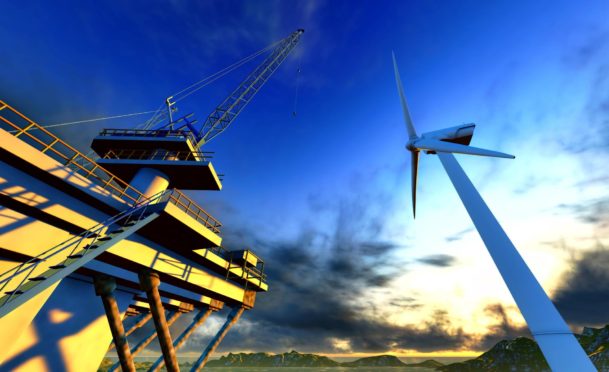On March 24 the UK Government published its North Sea Transition Deal for the UK oil and gas industry, so what does it all mean for Aberdeen? Kenny Paton, a senior oil and gas lawyer at Dentons law firm and based in Aberdeen, discusses the question below.
VOTE OF CONFIDENCE
“The deal aims to reduce the industry’s greenhouse gas (GHG) emissions; rapidly grow the new sectors of clean hydrogen and carbon capture utilisation and storage (CCUS); and ensure that UK jobs in new energy and decommissioning replace those lost as North Sea oil and gas output declines.
By 2030, industry is to invest at least £4 billion on the Deal’s objectives, with total investment of up to £16 billion. Government will create regulatory structures that support capture of 10 million tonnes of CO2, five gigawatts of clean hydrogen production capacity by 2030 and other net zero activity.
It will also provide some financial support, which will be at least partly conditional on satisfying “local content” requirements.
CCUS, clean hydrogen, and decarbonising oil and gas supply are all problems the oil and gas industry must solve cost effectively in order to survive and thrive in a net zero world.
The deal shows the UK’s determination to help them do this.
On the industry side, it is an implicit vote of confidence not only in UK Government and regulatory policy, but also in Aberdeen as a place which can recover and continue its energy journey in a rapidly changing world.
WORLD OF OPPORTUNITIES
The deal commits the industry, by 2030, to halve its emissions – compared with 2018 – and hit international targets for reduced methane intensity and zero routine flaring.
This would eliminate about 2% of all UK GHG emissions.
Digital technologies, like AI and machine learning, will play a key role.
So too will decarbonising the power supply of offshore operations by using floating offshore wind (FOW) rather than fossil-fuel-powered generators.
As carbon pricing regimes become more widespread and carbon prices rise, the commercial – as well as environmental – value of these technologies will increase worldwide.
For those who develop, commercialise and integrate them, the rewards will be great and not limited to the North Sea.
To balance the carrots with sticks, recent publications by the Oil and Gas Authority show how it plans to “encourage” decarbonisation, CCUS and hydrogen at each stage in an oil and gas project’s life.
SWEET SPOT
To reach their full potential, these new technologies need the skills and infrastructure of the North Sea’s “traditional” energy sector.
CCUS and “blue” hydrogen projects – methane reformation plus CCUS – can gain a competitive edge by reusing existing infrastructure.
So too may “green” hydrogen – electrolysing water with renewable power – if produced offshore, as it is likely that it will be in some cases.
The undoubted intense interest of oil majors and service companies in FOW speaks for itself.
It is not just the oil and gas sector’s legacy, physical assets and engineering expertise that will help in the future.
The new technologies’ business models will be informed by decades of learning on how to identify and allocate risk and turn good business models into robust contracts.
So it is no surprise that Aberdeen and its hinterland are already pioneering FOW, with Equinor’s Hywind project, and CCUS/ blue hydrogen, with the proposed Acorn projects at St Fergus and Peterhead.
The thrust of the deal is also absolutely in tune with local government initiatives like the city council’s Net Zero Vision and Strategic Infrastructure Plan.
HIGH STAKES
Success is not a given – support for the new industries will be awarded competitively.
A government tender later this year will select the sites for the first two CCUS/hydrogen clusters.
Aberdeen and the North East is well-placed to make the cut, but competition will be fierce as it always is in the auctions for revenue support for offshore wind.
The Granite City will also have to compete for investment within the global energy industry; the North Sea is not the only hotbed of activity in CCUS, hydrogen or FOW.
In this context, what is most likely to give us an edge is having a regulatory environment that makes the new technologies readily investable.
Fortunately, the UK’s track record of regulating new energy markets into existence is quite good.
Progress on CCUS and hydrogen in particular is central, so the prize is huge and Aberdeen is well-placed to share in the spoils by leading the global oil and gas industry towards a successful energy transition.”
Find out more about the Dentons Aberdeen office online here.

